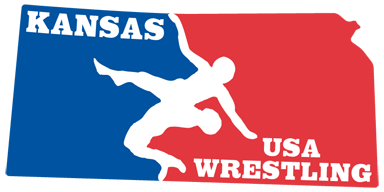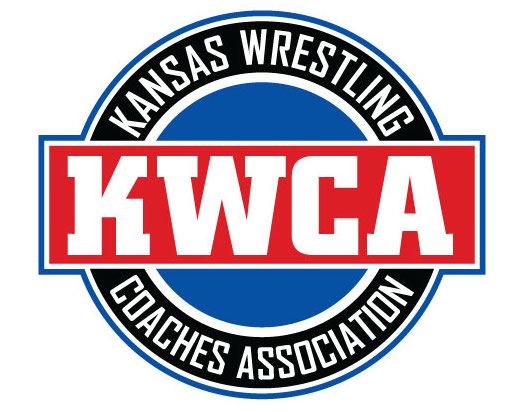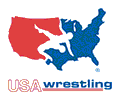Single-semester schedule, dual emphasis for college wrestling?
Mark Palmer
Mark Palmer, InterMat Senior Writer
9/29/2017
mark@intermatwrestle.com, Twitter: @MatWriter
A dual meet last season between Arizona State and Ohio State (Photo/Tony Rotundo, WrestlersAreWarriors.com)
Imagine the college wrestling season fitting into a single semester, starting in January, and concluding in April.
What's more, dual meets could have a greater impact on determining national champions.
Those concepts may become reality, as a Blue Ribbon Task Force for NCAA wrestling has been looking at ways to ensure the future of the sport, and make it better for athletes, coaches and fans.
Award-winning wrestling writer Andy Hamilton outlined these proposed changes in a feature article for Trackwrestling.com this week.
"The task force assigned to examine the sport's long-term health has unanimously approved schedule adjustments that, if passed by the NCAA, would squeeze the Division I season into one semester, culminating with a late-April dual championship tournament," according to Hamilton.
The task force -- comprised of wrestling coaches, athletic directors, conference commissioners, as well as NCAA executive vice president of regulatory affairs Oliver Luck (former athletic director at West Virginia University) -- has proposed two fundamental changes to the structure of the college wrestling season:
Shifting the wrestling season from the current one that roughly spans from Halloween to St. Patrick's Day, to a new calendar that corresponds to what most colleges would consider to be spring semester, from about New Year's Day to the end of April, making wrestling a single-semester sport.
Incorporating a greater emphasis on dual meets, by having the season conclude with a two-week dual meet tournament that would be held after the traditional conference and NCAA Wrestling Championships.
Let's take a look at each of these components.
A single-semester season
Arguably the reason for concentrating the college wrestling season into spring semester is ... for the wrestlers. This shift would provide freshmen the entire fall semester to get acclimatized to all the challenges of the college experience, including more rigorous coursework, learning time-management skills, dealing with dorm-mates and roommates, and missing friends and family back home.
"If you just look at the facts with wrestling in general, we have a lot of first-generation college students and I think when you add in these kids coming to school and starting preseason right away, cutting weight and trying to get certified for the beginning of the year and then competing really close to those first final exams, it puts a lot of stress on the athletes in that first year," Troy Nickerson, head wrestling coach at Northern Colorado and a Blue Ribbon Task Force member, told Trackwrestling.com. "That's one of the big reasons why we chose the second semester being a better fit for it."
The thinking behind the spring-semester season shift may draw from past practice. Until about 1970, college wrestlers were prohibited by the NCAA from competing in intercollegiate wrestling matches as freshmen ... with the idea of giving new college student-athletes an entire school year to get accustomed to all the challenges of first-year college life.
What might a single-semester wrestling season look like?
According to Blue Ribbon Task Force facilitator Jim Fallis, the proposed NCAA Division I* season would start on or around Nov. 10 with official practices ... with competition beginning during the break between semesters. The first half of the season would feature a mixture of duals and individual tournaments leading up to March's conference tournaments and the NCAA Championships. However, that would NOT be the end of the college wrestling season ...
(* What about NCAA Division II and Division III? Fallis told Trackwrestling.com that if keeping the season as is would work best for D2 and D3, they can do that.)
An enhanced dual meet focus
Once the NCAA Championships were completed, the season would only consist of duals, culminating with a two-weekend, 16-team dual tournament held on college campuses. The bracket would be filled by conference dual champions and at-large selections, Trackwrestling.com reported. The top eight seeds would each host dual meets on the dual tournament's first weekend. The top remaining seed after the first weekend would play host to an eight-team championship bracket the following weekend. This dual meet championship may well be a major factor -- or, perhaps even THE determining factor -- in crowning a team titlewinner.
"We need to find a way to make the dual meet matter more," Troy Nickerson told Trackwrestling.com. "Dual meets are exciting. You're always going to have your wrestling fans, but I think a dual meet is much more likely to capture that casual fan. They can conceptualize that a little bit easier than sitting eight hours at a tournament all day long."
For a number of years, the NCAA has been promoting the idea of greater emphasis on dual meets. In a report incorporating a survey of attendees at the 2014 NCAA Division I Wrestling Championships, the collegiate sports organization seemed to be laying the groundwork for arguing its "team component" proposal -- also referred to as a "dual team competition component." Back then, the NCAA's proposed a dual meet tournament spanning three weekends in February, with teams earning points which would be a factor in determining team titles at the NCAAs. The proposal would have 70 percent of the team race be determined by the present method of points garnered by individual wrestlers at the NCAA championships, and 30 percent from this new dual meet tournament. This would be a significant change from how team titles have been determined for decades -- strictly based on points scored by wrestlers during the tournament -- and has generated some strong opposition.
What is the thinking behind an emphasis on dual meets? In its 2014 report, the NCAA stated that the dual team competition component will attract "younger fans that may not have the time or resources to attend the NCAA individual component championships ... However, they can commit two hours to attend a dual match at a nearby school."
In a May 2015 article titled "The Graying of the NCAAs", this writer cited the report on the 2014 NCAAs which explained the importance of developing more wrestling fans by reaching out to casual sports fans, especially near college campuses. The report went on to state a number of projected outcomes if its team component proposal were implemented, including more focus on team competition during the season, increase in fan affinity and attraction of more casual fans, additional media exposure and increased broadcast opportunities, and additional recognition opportunities for wrestling teams and institutions.
"Dual meets provide a clear picture of competition for fans who currently sit outside the day-to-day of the sport," wrote T.R. Foley in his "Foley's Friday Mailbag" for InterMat on Friday, Sept. 29. "The meets are easier to televise, discuss and promote. I'm in favor of the steps taken and think that with more details will come even more support from coaches, athletes and fans."
"Concentrating the season into one semester and creating new ways for fans to watch the sport is a positive for our sport," Foley, a former University of Virginia All-American wrestler, concluded.
Some historical perspective
Today's schedule is NOT your grandfather's college wrestling season
The college wrestling season has not always been as long as it is today.
From looking at college wrestling schedules from decades ago, it's pretty safe to say that most college wrestlers of the 1920s or 40s or 60s had a schedule that looks more like what is being proposed by the 2017 Blue Ribbon Task Force than the current time-frame. In other words, a dual meet season that began in January, with the NCAA championships usually being held the last weekend in March. There was not the proliferation of early-season November-December tournaments back then that there are now.
To provide an individual perspective on old-school vs. more recent college wrestling schedules, let's take a look at two of the all-time great collegiate mat champs of two different eras, Dan Hodge and Cael Sanderson.
Hodge, who wrestled in the mid-1950s at the University of Oklahoma, compiled a 46-0 record over three years of intercollegiate competition. That means the legendary Sooner superstar wrestled about 15 matches a year, including those at the Big 8 conference championships and the NCAA wrestling championships, in his three years of eligibility from 1955 through 1957.
By comparison, Cael Sanderson compiled a 159-0 record over four seasons at Iowa State from 1999 through 2002. Sanderson, now head coach at Penn State, wrestled 39-40 matches in each of his four seasons of eligibility (again including conference and national championships).
Shifting the season: Not a totally new idea, but a good one
The efforts of the Blue Ribbon Task Force are to be applauded as the organization seeks to improve the student-athlete experience, enhance academic performance, put ore fans in the stands for regular-season dual meet events, and generate more media coverage for college wrestling overall -- and, in particular, the national championships which have been fighting a losing battle for media attention because of the NCAA basketball championships.
However, the idea of making college wrestling a single-semester sport -- and pushing the NCAA championships a bit later on the calendar, out of the shadow of basketball's "March Madness" -- are not completely new.
Fifteen years ago, one of this writer's first articles for a now-defunct wrestling website addressed this very topic ... as there was discussion of single-semester, January-through-April college wrestling season in the early 2000s. A number of college coaches weighed in, offering their support for changes to the season structure that share some of the elements that are now being proposed.
That does not mean the proposals of the Blue Ribbon Task Force should be dismissed as "nothing new." In fact, the fact that some of today's proposals had validity and currency a decade-and-a-half ago mean the time for serious consideration and implementation is now.
What's next
In the coming weeks, the Blue Ribbon Task Force will be presenting its findings to the NCAA, with the possibility of implementation as early as 2019, according to InterMat's T.R. Foley. Only time will tell.







